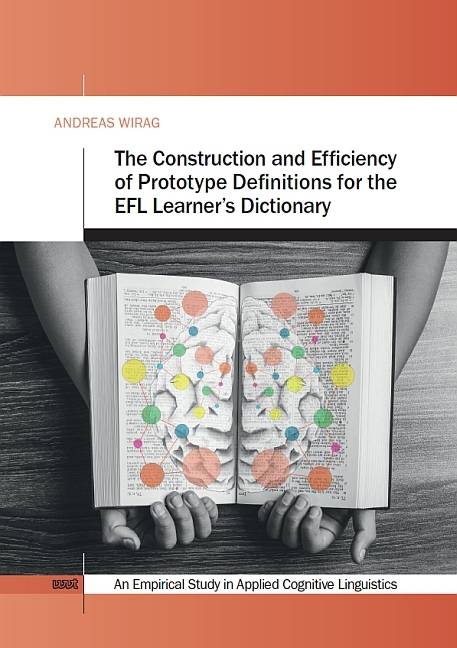
- Afhalen na 1 uur in een winkel met voorraad
- Gratis thuislevering in België vanaf € 30
- Ruim aanbod met 7 miljoen producten
- Afhalen na 1 uur in een winkel met voorraad
- Gratis thuislevering in België vanaf € 30
- Ruim aanbod met 7 miljoen producten
Zoeken
The Construction and Efficiency of Prototype Definitions for the EFL Learner's Dictionary
Andreas Wirag
Paperback | Engels
€ 34,45
+ 68 punten
Omschrijving
As a new, emerging field in L2 teaching and learning, Applied Cognitive Linguistics employs models and theories from Cognitive Linguistics and Psychology for the instruction of foreign languages, hoping to create more effective L2 teaching materials, methods and activities. In the past, EFL learner's dictionaries, such as the Oxford Advanced Learner's Dictionary, have used a definition style that relies on a Feature-Based Semantics. Here, defined words are treated as sum of their semantic features (e.g., "cactus" as "plant that grows in hot dry regions, with a thick stem and spines"). In contrast, this book suggests a novel definition style for the EFL learner's dictionary that makes use of a usage-based Prototype Semantics - i.e., "Prototype Definitions". Here, definitions are based on the most typical usage events (i.e., actual utterances that contain a given word) for the defined word.The first part of the book, to introduce the novel definition style, discusses a Feature-Based Semantics, Prototype Semantics in Eleanor Rosch's tradition, and a recent, usage-based Prototype Semantics. In its second part, it introduces a quantitative learner study with sixth-form EFL students at eight German secondary schools. The study shows that "Prototype Definitions", in direct comparison to OALD definitions, lead to a higher outcome in correct L2 word understanding.
Table of Contents
List of Tables .............................................................................................................. vii
List of Figures ............................................................................................................ viii
Acknowledgments ........................................................................................................ ix
Format ........................................................................................................................... xi
1. Introduction ......................................................................................................... 1
2. Applied Cognitive Linguistics ............................................................................ 5
2.0 Chapter Outline ..................................................................................................... 5
2.1 Towards a Definition of Applied CL ..................................................................... 5
2.2 Commitments of Applied CL .............................................................................. 13
2.2.1 The Cognitive Commitment ............................................................... 13
2.2.2 The Usage-Based Commitment ......................................................... 16
2.3 Research Dimensions of Applied CL .................................................................. 20
2.3.1 The Theoretical-Empirical Dimension .............................................. 21
2.3.2 The Non-Curricular-Curricular Dimension ....................................... 23
3. Prototype Semantics .......................................................................................... 25
3.0 Chapter Outline ................................................................................................... 25
3.1 Feature-Based Semantics .................................................................................... 26
3.2 Prototype Semantics: The "Roschian" Conception ............................................. 30
3.3 Prototype Semantics: The "Usage-Based" Conception ....................................... 38
4. The Learner's Dictionary ................................................................................. 46
4.0 Chapter Outline .........................
Table of Contents
List of Tables .............................................................................................................. vii
List of Figures ............................................................................................................ viii
Acknowledgments ........................................................................................................ ix
Format ........................................................................................................................... xi
1. Introduction ......................................................................................................... 1
2. Applied Cognitive Linguistics ............................................................................ 5
2.0 Chapter Outline ..................................................................................................... 5
2.1 Towards a Definition of Applied CL ..................................................................... 5
2.2 Commitments of Applied CL .............................................................................. 13
2.2.1 The Cognitive Commitment ............................................................... 13
2.2.2 The Usage-Based Commitment ......................................................... 16
2.3 Research Dimensions of Applied CL .................................................................. 20
2.3.1 The Theoretical-Empirical Dimension .............................................. 21
2.3.2 The Non-Curricular-Curricular Dimension ....................................... 23
3. Prototype Semantics .......................................................................................... 25
3.0 Chapter Outline ................................................................................................... 25
3.1 Feature-Based Semantics .................................................................................... 26
3.2 Prototype Semantics: The "Roschian" Conception ............................................. 30
3.3 Prototype Semantics: The "Usage-Based" Conception ....................................... 38
4. The Learner's Dictionary ................................................................................. 46
4.0 Chapter Outline .........................
Specificaties
Betrokkenen
- Auteur(s):
- Uitgeverij:
Inhoud
- Aantal bladzijden:
- 264
- Taal:
- Engels
Eigenschappen
- Productcode (EAN):
- 9783868219081
- Verschijningsdatum:
- 31/07/2021
- Uitvoering:
- Paperback
- Afmetingen:
- 151 mm x 14 mm
- Gewicht:
- 424 g

Alleen bij Standaard Boekhandel
+ 68 punten op je klantenkaart van Standaard Boekhandel
Beoordelingen
We publiceren alleen reviews die voldoen aan de voorwaarden voor reviews. Bekijk onze voorwaarden voor reviews.











